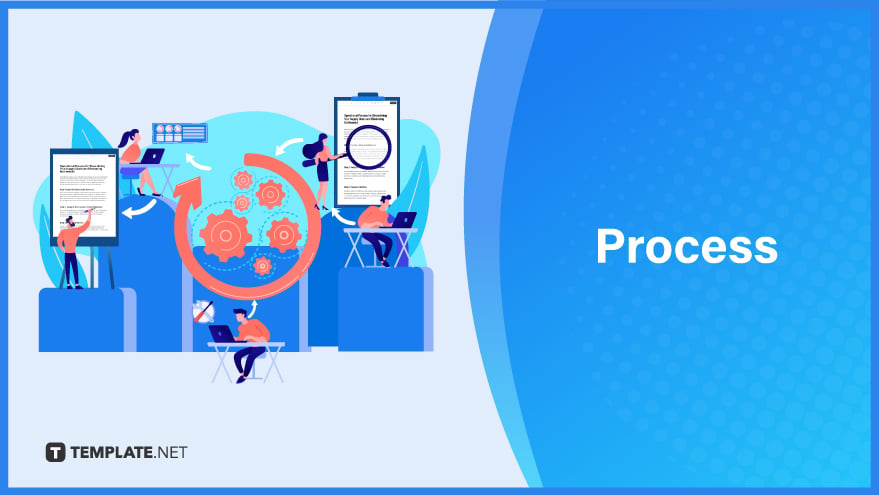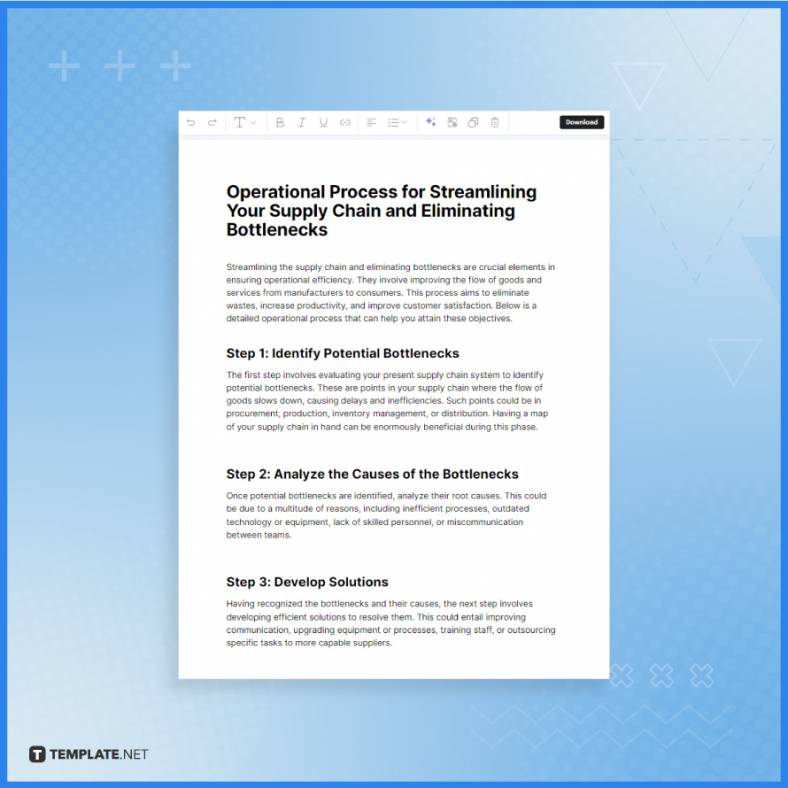Table of Contents
Process
A Process simplifies the sequence of activities or tasks, guiding participants through stages to ensure efficient and effective outcomes. Embracing the digital age, our artificial intelligence (AI) tools at Template.net enable swift process design, infusing simplicity and precision into your operational endeavors.

What Is a Process?
A process is a series of steps or actions taken to achieve a particular end. It provides a structured framework for businesses, individuals, and organizations, ensuring tasks are systematically executed. Defining a process ensures clarity, uniformity, and optimal results, whether it’s for product manufacturing or service delivery. Numerous ways exist to document this flow, including generating a template online with AI-enhanced tools.
Process Uses, Purpose, Importance
A process is fundamental in breaking down intricate tasks into manageable bits, ensuring clarity and efficiency for participants. Its primary aim is to facilitate smooth operations by defining a clear path, ensuring resources, time, and efforts are directed purposefully. Recognizing the importance of a well-defined process is the cornerstone for achieving operational excellence.
How to Generate a Professional Process with AI?
The dawn of advanced technology has made documenting processes more accessible through AI-powered platforms. Intelligent systems, such as those on offer at Template.net, lead users in crafting a process by gathering crucial details about the task or operation.
Select the nature of your task or operation, pinpointing the category from options like manufacturing, service delivery, software development, etc. Introduce specific steps, objectives, or milestones you aim to accomplish, detailing any prerequisites or resources needed.
The AI assesses this data, leveraging it to craft a detailed, logical, and sequential process.
Inspect and modify the production process to encompass any unique details or vital points that align with your specific goals or audience.
Process Examples
Processes span a wide spectrum and cater to diverse objectives, yet their structure and blueprint can be effortlessly generated. If defining such sequences seems daunting, consider this illustration of an AI-created Process as your guidepost.
Our simplified and editable process example aims to infuse clarity and effective task management. Direct your team seamlessly from the onset to the end, laying the foundation for systematic operations. By judiciously designating tasks and ensuring consistent understanding across stakeholders, you can seamlessly transform your operations into well-oiled, result-driven endeavors.
FAQs
What is a process?
A process is a series of steps or actions taken to achieve a specific outcome.
Why is a process important?
Processes ensure consistency, efficiency, and quality in operations.
How can a process be improved?
Processes can be improved by analyzing performance, identifying bottlenecks, and implementing best practices.
What is the difference between a process and a procedure?
A process is a broader sequence of activities, while a procedure is a detailed set of instructions to perform a specific task.
How is a process documented?
A process is documented using flowcharts, written descriptions, or digital process mapping tools.
Why should businesses document their processes?
Documenting processes helps in training, consistency, scalability, and continuous improvement.
What’s the role of technology in process management?
Technology aids in automating, analyzing, and optimizing processes for better efficiency.
What is Business Process Management (BPM)?
BPM is the practice of modeling, analyzing, optimizing, and automating business processes.
Can processes change over time?
Yes, processes often evolve based on feedback, technology, and changing business needs.
How can employees be trained on new processes?
Employees can be trained through workshops, hands-on practice, digital tutorials, or mentorship.








